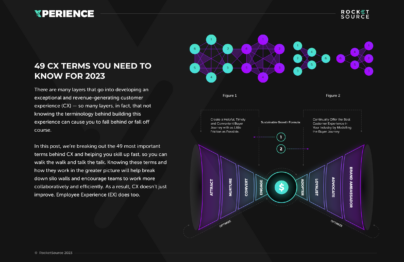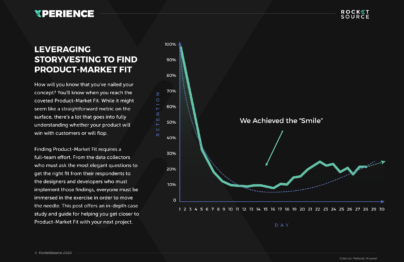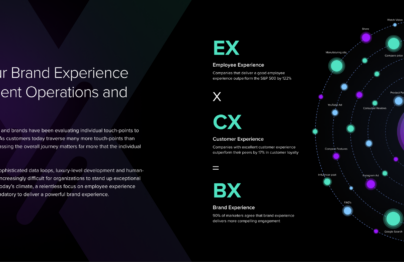Customer Experience (CX) Metrics enable organizations to track and measure customer behavior. The data gathered allows organizations to create lasting customer relationships to drive reliable, sustainable growth.
Through accelerated technological innovation, intensified competitive pressure and increased customer expectations, organizations have had to lean further into CX metrics to understand what consumers need at a more nuanced level. While there are many metrics that can be monitored, organizations must lean into specific Key Performance Indicators (KPIs) and North Star Metrics based on the business model in motion. In doing so, teams can create a more aligned Brand Experience (BX) rooted in behavioral data.

Leveraging Behavioral Frameworks with CX Metrics
CX Metrics work to understand the consumer’s path-to-purchase and a customer’s path to retention. By implementing intelligent operations, organizations can gather the insights needed to understand better buyers’ emotional and logical needs across both paths.
These metrics are only part of the puzzle. Knowing how the data gathered aligns with the why, what and how of every single user requires that organizations leverage a behavioral framework, like StoryVesting. It’s frameworks like StoryVesting that can determine the alignment of internal and external data points and the nuances behind consumer decision-making to build better customer experiences.
Many businesses use different metrics to gauge CX. Having a framework in place allows you to ask the right questions and drive closer to the core why of the consumer’s experience. As a result, organizations can create stickier products or offerings and build retention, which leads to more predictable and sustainable growth.
A Formula to Fuel Brand Experience
Growth tracking goes well beyond monitoring Return on Ad Spend (ROAS), Return on Investment (ROI), and the lifetime value of a customer (LTV). While these metrics are informative, they only tell a small part about how a team’s daily output impacts the customer’s experience.
Adding operational efficiencies, growth levers, and retention drivers can equip an organization to eliminate bloat, propel the business forward, and fuel retention over the long haul.
A Formula to Fuel Brand Experience
Growth tracking goes well beyond monitoring Return on Ad Spend (ROAS), Return on Investment (ROI), and the lifetime value of a customer (LTV). While these metrics are informative, they only tell a small part about how a team’s daily output impacts the customer’s experience.
Adding operational efficiencies, growth levers, and retention drivers can equip an organization to eliminate bloat, propel the business forward, and fuel retention over the long haul.
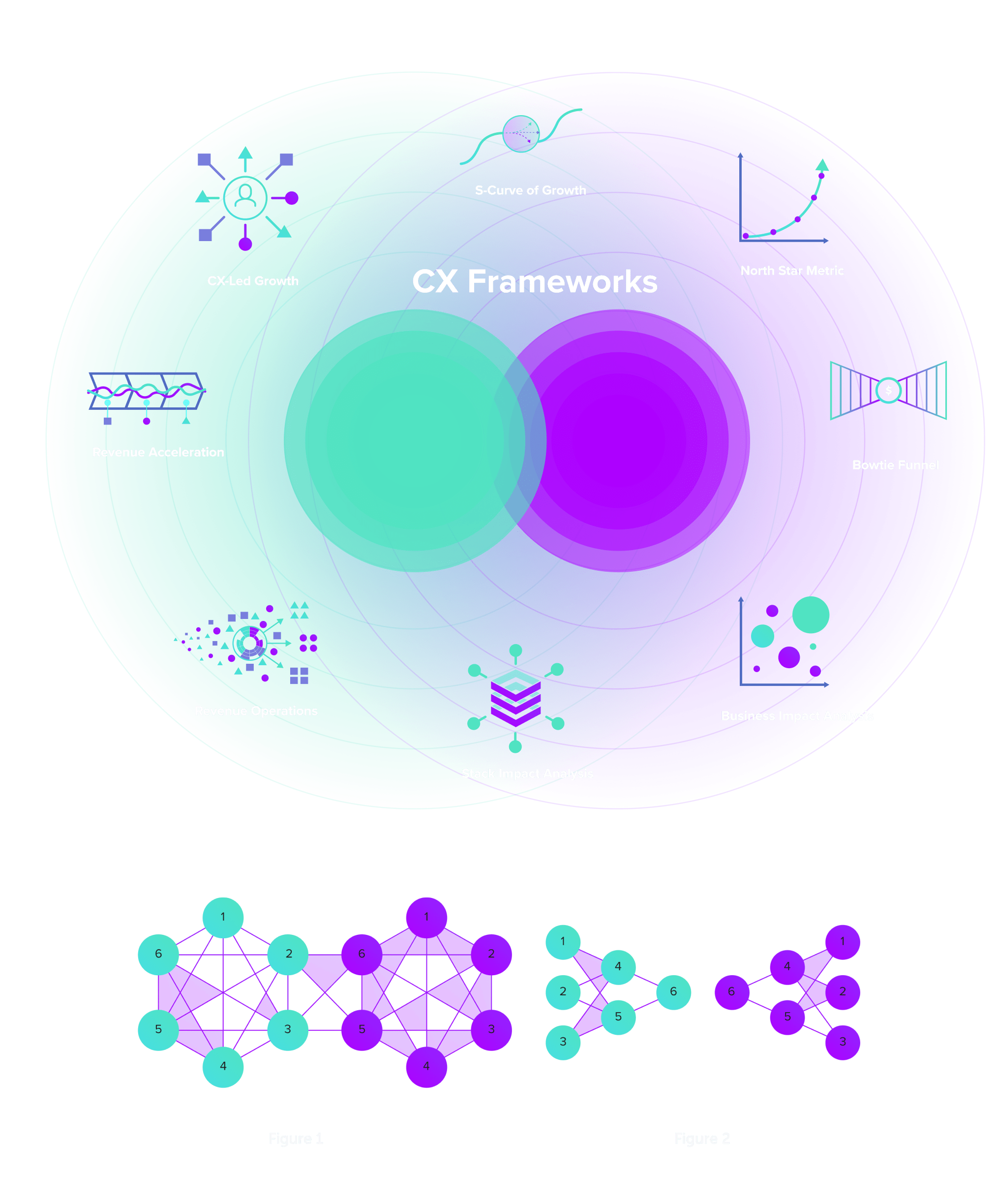
The Power of a Proper North Star Metric
North Star Metrics are used by organizations to determine long-term success. To ensure that these and other CX metrics are guiding success rather than guiding teams slowly off course, certain criteria should be met:
- The metric must be easy to understand at every level of the company.
- The metric must reflect the “aha” moment of value for the customer.
- The metric must lead to correlated growth of a North Star goal.
- The metric must monitor measurable and progressive changes throughout the organization.
- The metric must be tied to lifetime value rather than acquisition alone.
Organizational values must be brought into the mix when choosing which North Star Metric or constellation of CX Metrics to monitor. Rather than looking at short-term inputs, effective CX metrics address long-term growth needs.
Customer Experience (CX) Terms
- 360° Degree View of the Customer
- AI Ops
- Barlow Bands
- Behavioral Triggers
- Bow Tie Funnel
- Brick-to-Click
- Business Impact Analysis (BIA)
- Cognitive Computing
- Cohort Analytics
- Content Mapping
- Conversational User Guidance
- Customer Data Profile
- Customer Experience (CX)
- Customer Friction
- Customer Insights Map
- Customer Journey
- Customer Journey Mapping
- Customer Satisfaction (CSAT)
- Customized Ratios
- CX Intelligence
- CX Led Growth
- CX Metrics
- Data as a Product (DaaP)
- Data as a Service (DaaS)
- Data Culture
- Data Driven
- Data Engineering
- Data Fabric
- Data Governance
- Data Humanization
- Data Hygiene
- Data Looping
- Data Mapping
- Data Mining
- Data Modeling
- Data Monetization
- Data Swamp
- Data Visualization
- Data Warehouse
- Data-Centric
- Descriptive Analytics
- Diagnostic Analytics
- Digital Asset Management (DAM)
- Digital Transformation
- Dirty Data In Dirty Data Out
- Embedded Intelligence
- Empathy Mapping
- Employee Data Profile
- Employee Experience (EX)
- EX to CX Data Mapping
- EX to CX Mapping
- Experience Management (XM)
- Gap Analysis
- Generative AI
- Human-Centered Design (HCD)
- Journey Analytics
- Machine Learning (ML)
- Managed Agile Services on Demand
- Modified Hoshin
- North Star Metric
- Party Data
- Pathway to Purchase
- Predictive Analytics
- Product-Market Fit Mapping
- Real Time Design Looping
- Revenue Acceleration
- RevOps
- S Curve of Growth
- Stack Impact Analysis
- StoryVesting
- Table Stakes Testing
- The 3 P’s
- User Experience (UX)
- User Insights Map
- User Interface (UI)
- Voice of the Customer (VoC)
- Voice of the Employee (VoE)
- World Cloud Generator Sentiment Mining
- X Analytics




